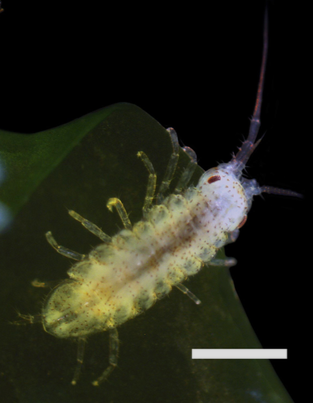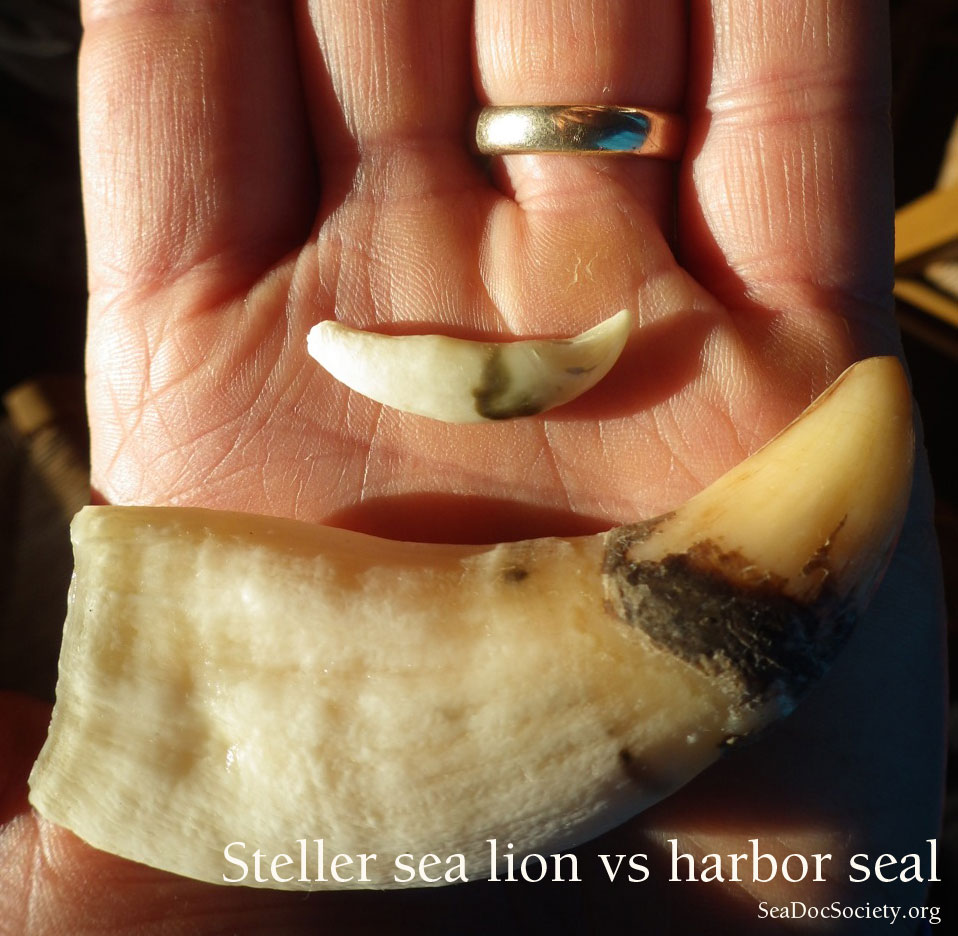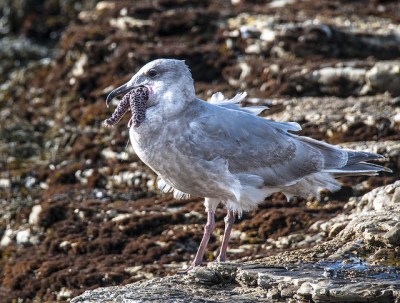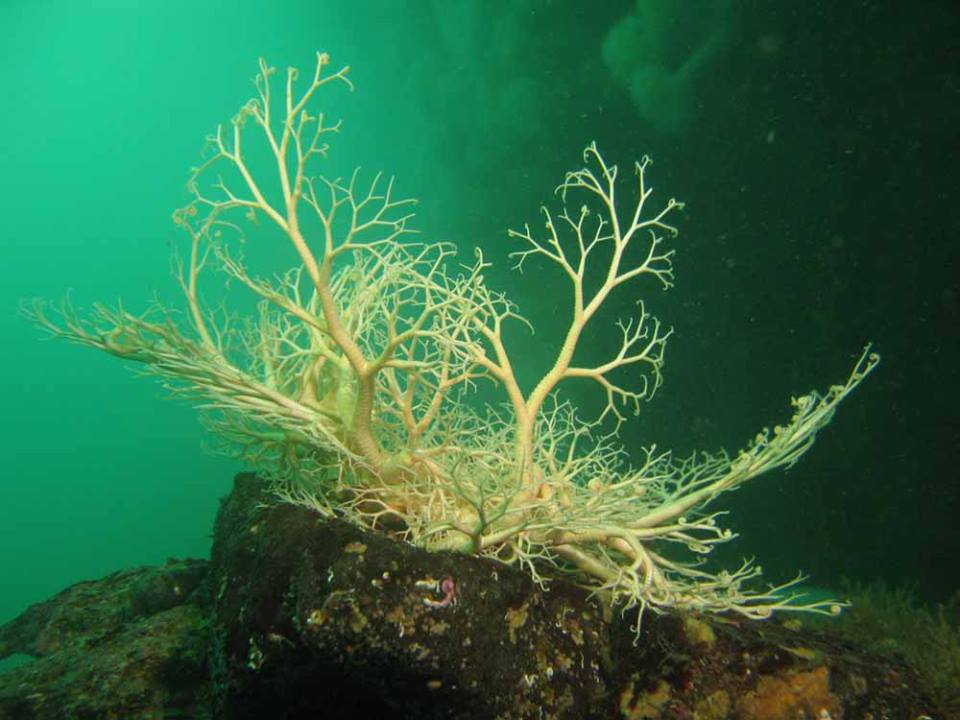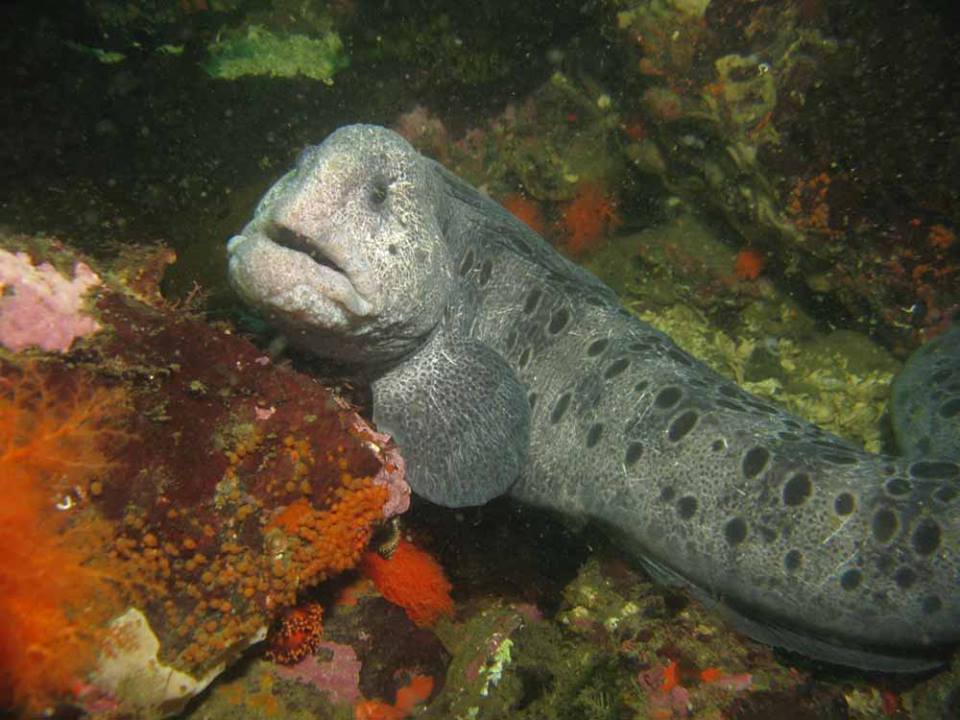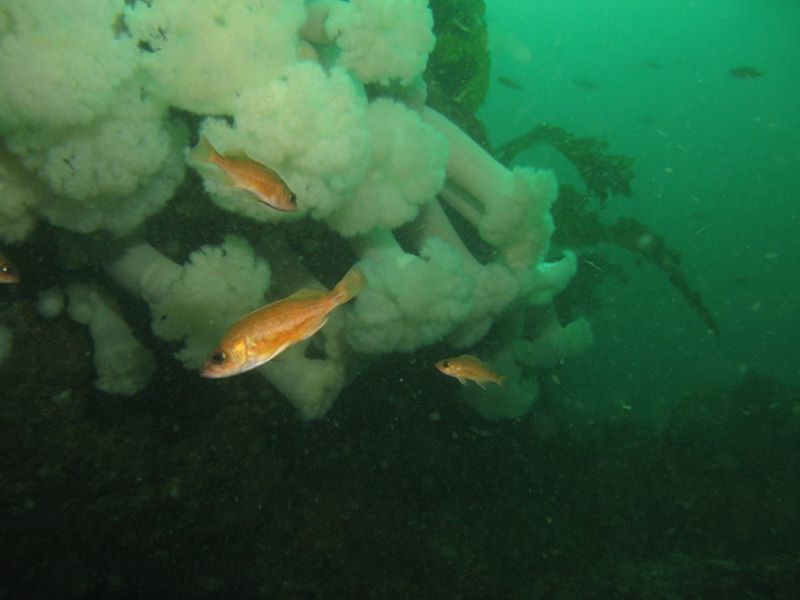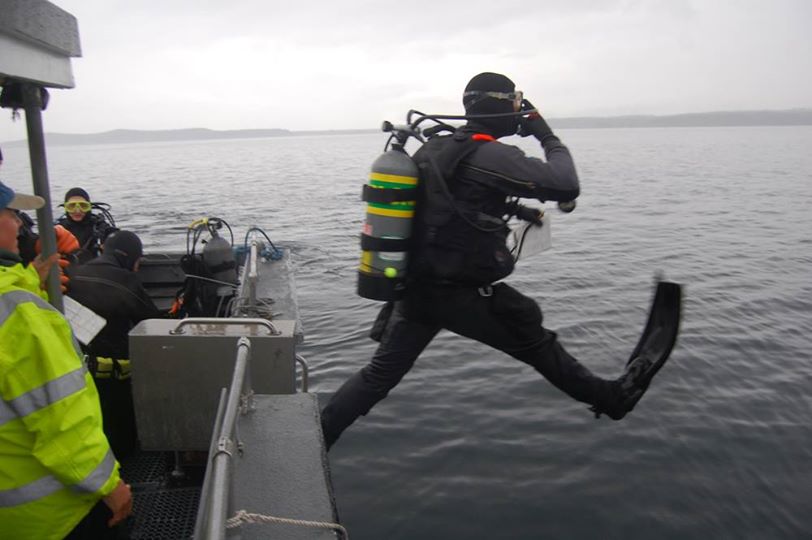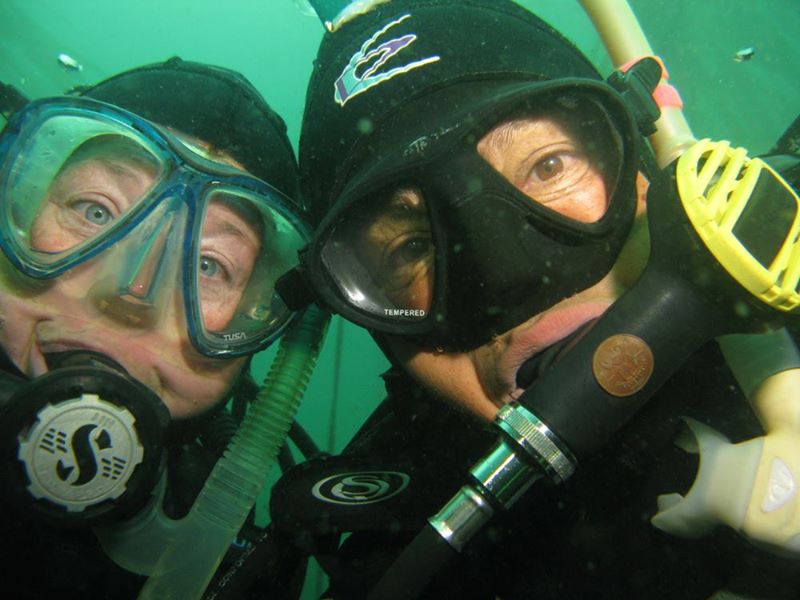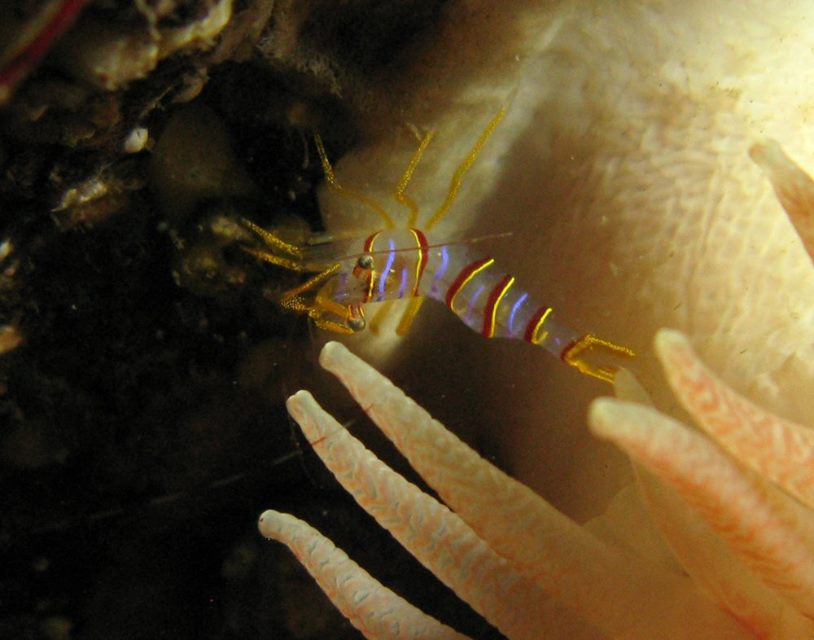Dr. Lesanna Lahner from the Seattle Aquarium and Paul Cottrell of the Department of Fisheries and Oceans Canada keep the sea lion close to the boat. Photo: J. Gaydos
Earlier in the week Joe Gaydos was able to work with a skilled team of experts from the Vancouver Aquarium Marine Science Centre, the Department of Fisheries and Oceans, Canada and the Seattle Aquarium to disentangle a 1,400 lb. Steller sea lion that was being strangled by a piece of packing strap. The animal was immobilized by remote injection of an anesthetic cocktail. Once it was sedated, the team cut the packing strap loose and reversed the anesthesia, allowing the fully recovered animal to swim away free.
Plastic packing strap removed from sea lion
Like any complex procedure performed by trained experts, this procedure looks rather straight forward to any onlooker, but is actually the product of years of development by Dr. Marty Haulena and colleagues. It requires a skilled team of boat drivers, biologists, veterinarians and veterinary technicians.
Gaydos and Seattle Aquarium Veterinarian Dr. Lesanna Lahner are working with NOAA Fisheries to import the protocol into Washington and Oregon.
See more photos at the Vancouver Aquarium's Marine Mammal Rescue Centre's Facebook page.





